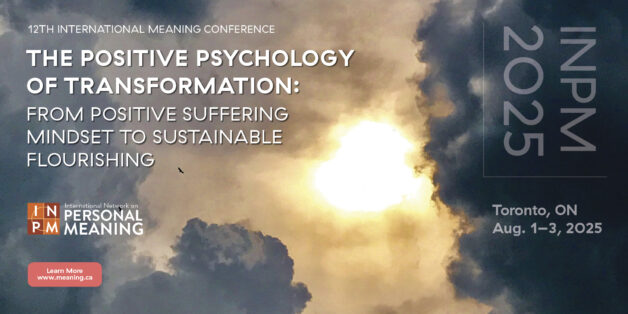The Asian tsunami trauma is a different category of natural disaster in terms of scale and impact. Unlike most natural disasters, which tend to be one-time blows at a specific geographic location, the Asian tsunami catastrophe is almost worldwide in its scale; and its devastating impact on poor and highly populated nations may last for a generation. It is a prolonged natural disaster that will affect the ecology, economy, health and livelihood of millions of people for a long, long time. Traditional ways of providing therapy may not be adequate without being accompanied by massive international aid and government interventions in many areas, such as medicine, public health, infrastructure rebuilding, community involvement, and the infusion of economic capital, etc.
The path to healing will be long and difficult, but ultimately the key to the restoration of positive mental health is to cultivate a unique, personalized blend of strengths and vulnerabilities, which balance despair with hope, doubt with faith, death with rebirth, and loss with gain.
Whenever possible, seek professional help. Within the secure confines of a clinic or counseling office, and with the help of a competent therapist, a traumatized victim has the best prospect to recover. The present guide is primarily intended for those who have no access to professional help at the moment.
My approach is existential-humanistic, because it acknowledges that suffering is an inevitable part of the human condition, and that affirmation of meaning is the foundation for hope and recovery. The present paper offers the following 12-step trauma recovery guide:
1. Stay alive to allow time for healing. Unbearable pain can drive you to the brink of self-destruction or to the state of dissociation. You may feel very frightened, disturbed, demoralized, or disoriented. Whatever your emotional, mental state, just don’t do anything to harm yourself. Try to seek whatever help available so that your basic needs for food, water, shelter, security, and medicine are met. Learn to monitor and regulate your own emotions so that you can exercise some self-control. Seek social support and re-establish personal relationships. Try to take care of yourself and give yourself sufficient time to recover. Live one day at a time. Do whatever you can to contain the injury and stay alive in order to give hope and healing a chance.
2. Accept the horror of the loss. It may be hard to believe what has happened to your family and your community. It may take time to realize the full extent of your loss. Avoidance is a natural response, but you cannot spend the rest of your life running away from bad memories. Eventually, you need to recognize the devastating reality and confront your own feelings of shock, anger, fear, panic, pain, loneliness, helplessness and hopelessness. Accepting the loss is a necessary step towards self-acceptance and recovery.
3. Surrender yourself and let go of what cannot be controlled. Resign yourself to the fact that you may never recover or identify the bodies of your loved ones; that the life you knew will never return. Surrender yourself to the overwhelming tragedy, to forces beyond human control or to your God, if you are a believer. Imagine yourself a broken glass – no longer able to hold the water within it. Give up your pride, your defenses, and your biases. Give up your desperate but futile attempt to put the broken glass back together again. Accept the fact that all that you have cherished has been washed away, and can never be reclaimed. At this point, life may feel like a dream…a nightmare…a vanishing cloud. By letting go of yourself, and relinquishing control of what cannot be controlled, you begin to feel some release from guilt, fear, anxiety and the need for blaming. When you are willing to reduce life to nothingness, to ground zero, then you are ready to start the process of rebuilding.
4. Affirm the inherent meaning and value of life. The first building block in the process of restoration is affirmation. The fact that you have not given up on life indicates that you are implicitly affirming that life has meaning and purpose, and that life is worth living in spite of the pain. You may still feel confused, overwhelmed and fearful, but you have the inner conviction that your ordeal will be over, and that you can start afresh. You begin to focus on the positive aspects of life and on the promises of tomorrows. Once you have affirmed your faith in the meaning of life and in a hopeful future, your life begins to rise above the debris and ashes.
5. Have the courage to endure and observe your painful feelings. The next step is to learn to endure the pain rather than run away from it. It takes courage, endurance, and the defiant human spirit to continue the bumpy journey of healing. But it also takes stills. Learn to observe all the unpleasant and terrifying feelings until you can name and articulate them. At the same time, learn to recall positive moments and discover positive meanings of negative moments. This exercise of cultivating positive emotions will help cushion the blow of tragic reality. Be careful not to re-traumatize yourself. Make sure to give yourself breaks by taking a walk or talking to a friend, when you feel overwhelmed by torrents of painful emotions. Give yourself permission to express your anguish, grief and fear. More importantly, learn to observe and listen to your feelings with mindfulness and attentiveness, no matter how unpleasant and threatening. By learning to “mentalize” your painful feelings in a nonjudgmental, honest manner, eventually your feelings become your teacher and your guide.
6. Revisit and reconstruct the tragedy. Initially, you may be obsessed with only the negative and painful aspects of the tragedy. But do enquire about the calamity. Read about it. Talk about it. Write about it. Share it with someone. Eventually, you will be able to give a more complete account of the larger picture. Once you are able to place your loss in a global perspective, your unbearable pain becomes more bearable. More importantly, it will help you make sense of the trauma by creating a coherent story about it.
7. Make sense of the loss. You may never fully understand the cause or the reason for the catastrophe, but you need to make some sense of what has happened to you. You have already affirmed the meaning of life. It enables you to begin the process of rebuilding your shattered assumptions about the world, about God, and about yourself, in order to accommodate past and future tragedies. Through managing your personal meanings, beliefs and life goals, you learn not to ask why bad things happen to you, but how you can make the best of your loss. You are able to make sense of the loss through a creating a personal narrative that includes the past, the present, and a hopeful future.
8. Restore your faith. Meaning and faith are the two pillars of an enduring hope. Regardless of whether your faith is in God, Buddha, Allah, or Higher Power, it would be difficult for you to beat the odds without faith. Often, faith is the only light glimmering in an otherwise dark tunnel. Yes, you may be very angry with God and question his benevolence, but deep down you realize that you are in no position to judge God. Human suffering will be forever shrouded in mystery. But you can experience God’s grace and comfort, when you pray for courage and help. Faith enables you to see beyond the tragedy and transcend your present circumstances. Faith provides an unshakable foundation for hope.
9. Participate in acts of compassion. Faith and meaning always express themselves in concrete actions of compassion. You reach out to fellow sufferers, and try to bring hope and comfort to their lives. By being reconnected with others, you become more grounded to reality and experience more social support yourself.
10. Adapt to the new reality. Now you are ready to make the necessary adjustments to adapt to the new circumstances. You start from the ground floor up, one step at a time. You begin to make new friends and seek new opportunities for work. By developing a new routine of daily activities, life gradually returns to “normalcy”.
11. Transform the loss. You still feel the pain and grieve the loss. Sometimes, you find yourself sinking into a black void, not knowing how to extricate yourself. But as you refurbish your inner space, cultivate positive meanings, your life is elevated and enriched. In the process, your loss is gradually transformed and integrated into your tapestry of personal meaning.
12. Build a new future. You continue to work toward rebuilding your life, with a new found purpose and renewed passion for living. You have developed a new appreciation of life and relationships. Every day becomes a precious gift to be enjoyed, valued and used for the betterment of humanity. You have more than survived the tsunami — you have flourished!
Bibliography:
Allen, J. G. (2005). Coping with trauma: Hope through understanding. (2nd Ed.). Washington DC: American Psychiatric Publishing.
Herman, J. (1997). Trauma and recovery. New York: Basic Books.
Levine, P.A., & Frederick, A. (1997). Walking the tiger: Healing trauma: The innate capacity to transform overwhelming experiences. New York: North Atlantic Books.
Schiraldi, G. R. (2000). Post-traumatic stress disorder sourcebook. New York: McCraw-Hill.
Van Der Kolk, B. A., McFarlane, A. C., & Weisaeth, L. (1996). Traumatic stress: The effects of overwhelming experience on mind, body, and society. New York: Guilford Press.


 Meaning Conference 2025 will be the INPM’s first in-person conference with a virtual option after the pandemic.
Meaning Conference 2025 will be the INPM’s first in-person conference with a virtual option after the pandemic.